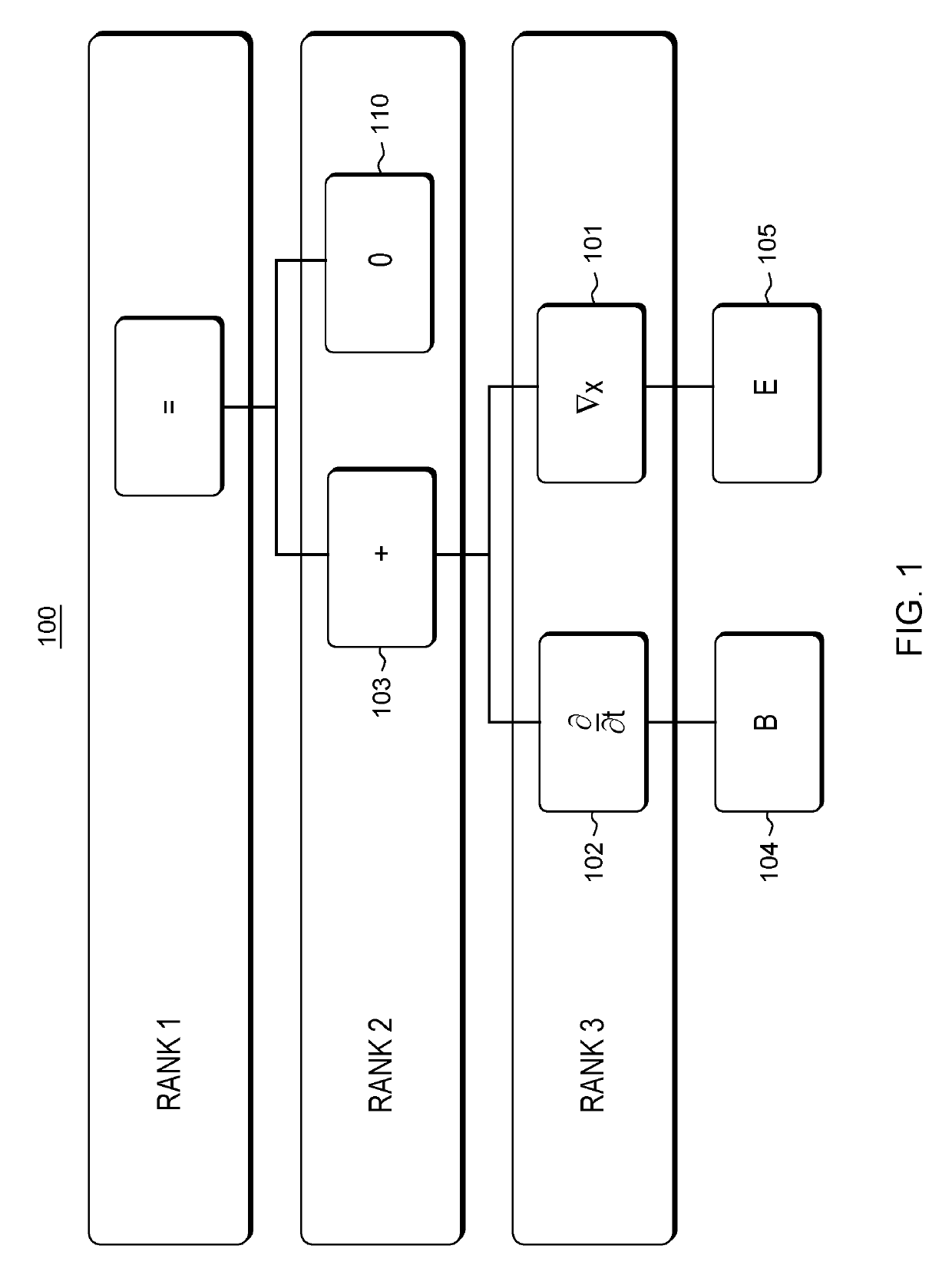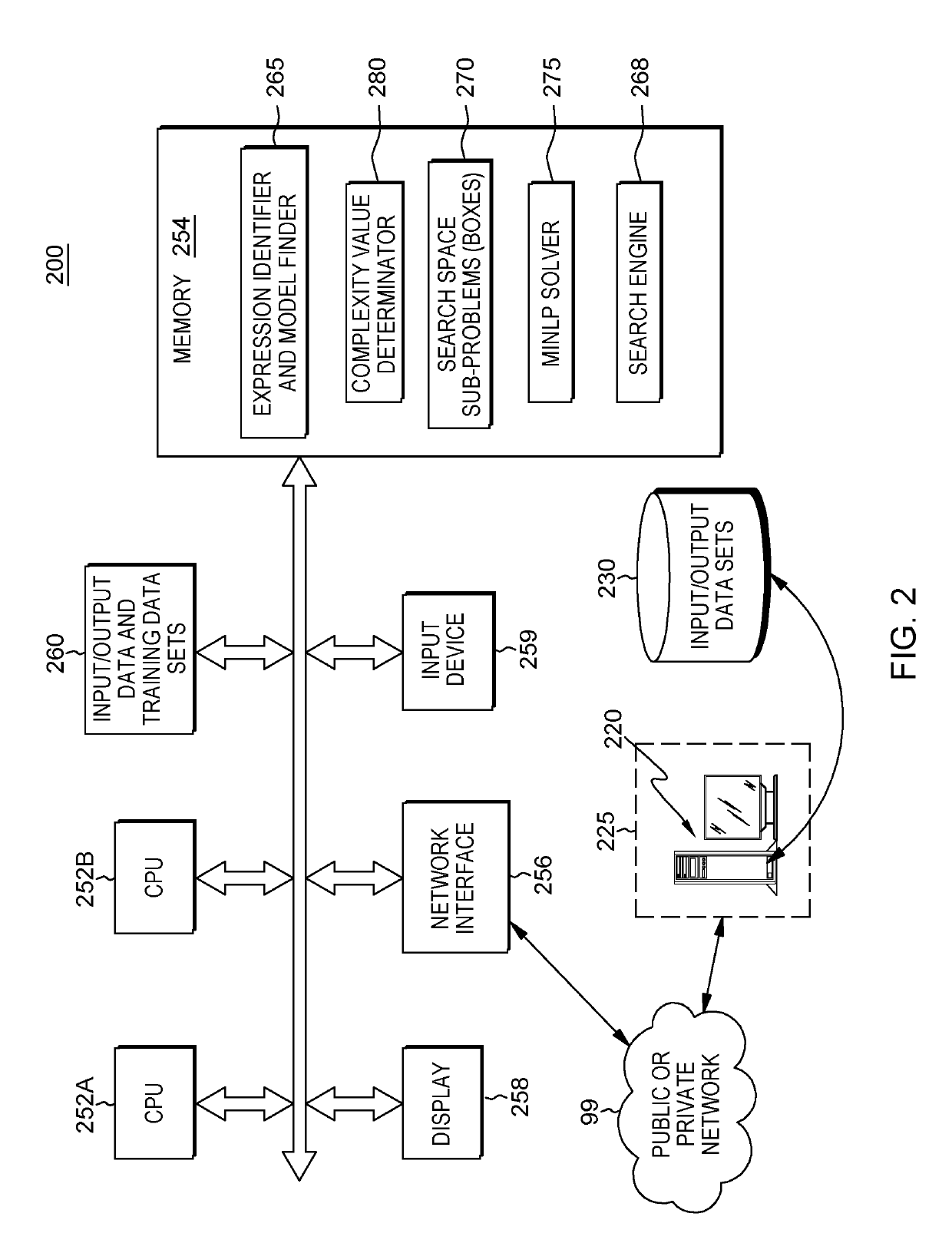Free-form discovery of differential equations
a differential equation and free-form discovery technology, applied in the field of automatic model discovery, can solve problems such as being limited by the selected pool of model structures
- Summary
- Abstract
- Description
- Claims
- Application Information
AI Technical Summary
Benefits of technology
Problems solved by technology
Method used
Image
Examples
Embodiment Construction
[0015]In one embodiment, there is provided a globally optimal, free-form methodology for the discovery of mathematical models involving differential equations. The discovery of such models to describe a system of unknown form is based on experimental data (observations).
[0016]In embodiments described herein, an equation is represented as a sentence in a formal language (the language of mathematical expressions). The language describes the admissible relations between the primitives of the equation (namely operators, differential operators, variables and coefficients).
[0017]In one aspect, the systems and methods herein define grammars for use in the automatic discovery of differential equations. A “grammar” is a sentence that describes admissible relationships between entities. A grammar defines relationships among entities, e.g., a set of entities, with rules that govern use and combinations of entities, e.g., operators (e.g., +, −, ×, / , as well as some that may not be used (but ar...
PUM
 Login to View More
Login to View More Abstract
Description
Claims
Application Information
 Login to View More
Login to View More - R&D
- Intellectual Property
- Life Sciences
- Materials
- Tech Scout
- Unparalleled Data Quality
- Higher Quality Content
- 60% Fewer Hallucinations
Browse by: Latest US Patents, China's latest patents, Technical Efficacy Thesaurus, Application Domain, Technology Topic, Popular Technical Reports.
© 2025 PatSnap. All rights reserved.Legal|Privacy policy|Modern Slavery Act Transparency Statement|Sitemap|About US| Contact US: help@patsnap.com



